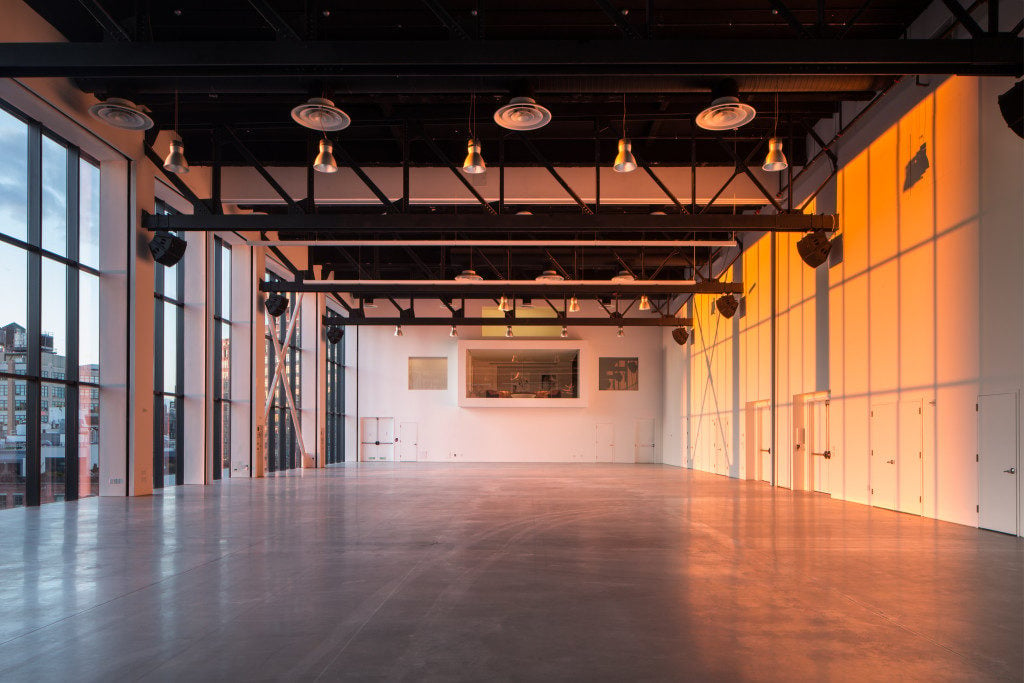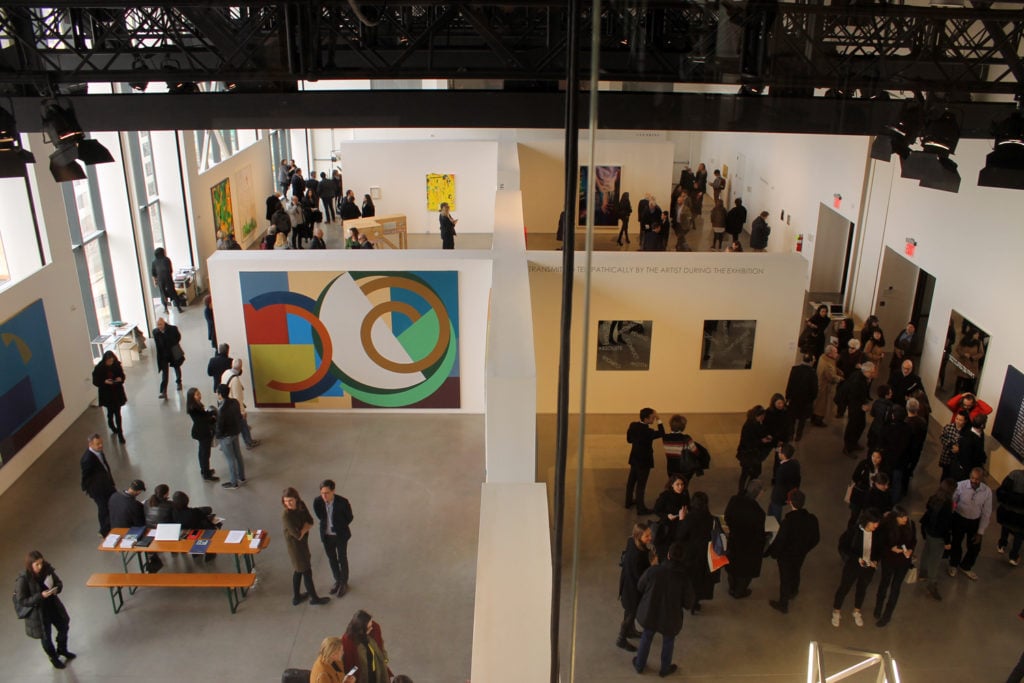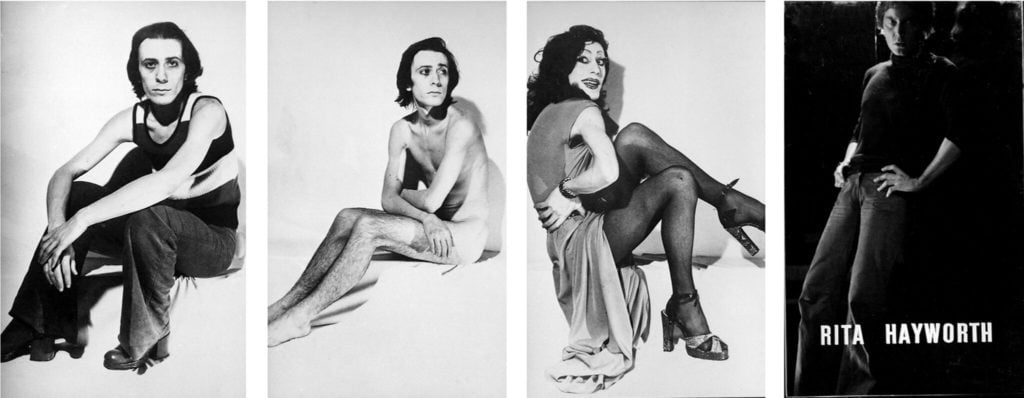Art Fairs
Laura Mitterrand Explains Independent’s Unique Art Fair Model
This year’s iteration welcomes over 50 international galleries.
This year’s iteration welcomes over 50 international galleries.
Henri Neuendorf

Independent, New York’s invitation-only, gallery-run art fair returns next month for its eighth edition. Taking place at Tribeca’s Spring Studios from March 2-5, this year’s iteration welcomes over 50 international galleries from 20 cities, under curatorial advisor Matthew Higgs.
Founded in 2010 by New York dealer Elizabeth Dee and London’s Darren Flook of Hotel gallery, Independent was conceived to compensate for the shortcomings that dealers (and artists) routinely lament about the mega-fairs, such as poor lighting, little regard to curation, and an intense focus on commerce.
This year’s iteration sees the emergence of five overarching themes. Sixteen percent of participants will show solo presentations by female artists.These include Tatiana Trouvé (Galerie Perrotin), Melike Kara (Peres Projects), and Katherine Bradford (CANADA), among others. Meanwhile, dealers are bringing the ’70s and ’80s back with key works by artists from these iconic eras.
In an exclusive interview with executive director Laura Mitterrand, artnet News found out what makes the New York fair different from its counterparts, and why all art fair directors should be dealers.

Spring Studios at 50 Varick Street, the new home of the Independent. Photo: Evan Joseph, courtesy Spring Studios, New York.
What makes Independent art fair unique?
In 2010 we had maybe 33 galleries for that first time, and since then it has evolved. The original idea was to have a more collaborative approach between us organizers, who are all from a gallery backgrounds, and the galleries exhibiting at Independent.
The first year we didn’t want to use the word “fair” because we didn’t want to be pigeon-holed in that. Because we wanted to be an integrated exhibition organized by galleries, but then very quickly we had to admit that it is a fair because it features galleries that are there for a commercial reason. But we kept this notion of working with the galleries in order to maximize the viewing of the works, whether it is an onsite installation that is made for the fair by an artist, or if it is a presentation of works that have been shown before but need a certain context.
We tend to place galleries in a certain way where we think there are some interesting conversations happening between the works presented by one gallery with the next gallery. So that means also that the architecture of the space responds to the needs of the galleries.

Independent 2016. Courtesy Rain Embuscado for artnet News.
A lot of fairs claim they are curatorially focused, what are some concrete examples of how Independent highlights the curatorial aspect?
We usually work with the galleries on the work they will be showing, and we give them freedom, and don’t impose anything.
Galleries have evolved to do more solo presentations at Independent. We see it as a great way of presenting work by an artist, either that the gallery newly represents, and wants to introduce, or for an artist who might benefit from having a solo presentation in New York, as New York is still the capital of the art world.
The curatorial element appears organically most of the time by the selection of galleries, and because it is invitational we can sometimes approach galleries with a certain idea of what they could bring to the equation or to the exhibition.
How does the selection process work?
We tend to rotate about 30 percent of galleries in order to keep giving opportunities to galleries to show at Independent and to provide the visitors with some new elements. Sometimes it happens naturally that one gallery will suggest another, and then we explore that possibility with them and among ourselves.
It’s also based on the layout, and we try to balance a certain amount of well-established galleries, young galleries, galleries bringing historical work, and galleries presenting very new emerging artists. Geographically it’s still very Western, but we also have galleries from Mexico or São Paulo and we always try to introduce voices from other places.

Michel Journiac Piège pour un travesti-Rita Hayworth (1972). Photo: Galerie Christophe Gaillard, Paris.
Does an invitation-only format lack inclusivity?
The way that we state “invitational” can be a little bit confusing because it makes people think they can’t apply, and it’s true that we don’t have an application process or application forms. But very often we have galleries that we meet or they come to Independent or send us emails expressing their interest.
We look into the program and if we think it could be interesting and an interesting proposal then we include them. It’s not like you can’t reach out to us and it does happen.
What are some of the highlights from the upcoming edition?
We see some themes arise from the different presentations of the galleries—they’re not solicited or anything. This year we have some interesting new galleries and galleries coming back with material and artworks from the ’80s, like Barbara Bloom, Nancy Shaver, and Thomas Bayrle. We also have a lot of women artists, which is exciting and also makes sense.
Then there’s two interesting solo booths that are worth pointing out. One is Hervé Bize, which is a gallery in Nancy [France] who will do a solo booth with André Cadere, a Romanian artist who mostly practiced in France and who is not very well known in the US.
At the same time, Christophe Gaillard from Paris will show work by Michel Journiac, an artist who was active in the ’60s and ’70s who was very influential but had little recognition.
This interview has been edited and condensed.
“Independent” runs from March 2 – 5 at Spring Spring Studio,, 50 Varick Street, New York.